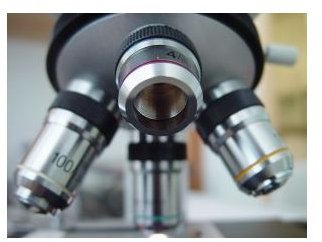Basic Root Cause Analysis Methods - Tools Used to Determine the Root Cause
Root Cause Analysis Methods and Techniques
A root cause analysis is a means to get to the bottom of a problem or unexpected event. Root cause analyses are important to undertake when your project or product is not what was expected. Root cause analyses aim at improving products or processes - quality - and they must be undertaken in systematic ways in order to be effective. This article will walk through root cause analysis methods and techniques you can use to improve the quality of your product or project moving forward. [caption id=“attachment_132832” align=“aligncenter” width=“640”] Use these root cause techniques to improve quality[/caption] The general process for undertaking a root cause analysis are:
Use these root cause techniques to improve quality[/caption] The general process for undertaking a root cause analysis are:
- Describe the problem your company is looking at
- Gather data associated with the problem
- Identify potential causes for the problem
- Identify which causes you will remove or change in order to prevent repeat problems
- Identify solutions that will be effective in preventing repeat problems
- Implement changes
- Observe changes to ensure that they have effectively eliminated the problem
There are many techniques involved in a root cause analysis. You may already be familiar with the five whys analysis. Even if you aren’t, you will be familiar with it and many of the other types of root cause analysis techniques after reading the rest of this article.
Five Whys Analysis
This might sound like the technique of a five-year-old wanting to get out of going to bed, but the five whys analysis can be quite useful for getting to the underlying causes of a problem. By identifying the problem, and then asking “why” five times - getting progressively deeper into the problem, the root cause can be strategically identified and tackled.
Failure Mode and Effects Analysis (FMEA)
The failure mode and effects analysis (FMEA) is a technique aimed to find various modes for failure within a system. Many manufacturing companies utilize this technique. FMEA requires several steps to execute:
- All failure modes (the way in which an observed failure occurs) must be determined.
- How many times does a cause of failure occur?
- What actions are implemented to prevent this cause from occurring again?
- Are the actions effective and efficient?
FMEA is often performed and updated any time a new product or process is generated, when changes are made to current conditions, or to the design, when new regulations occur, or when there is a problem determined through customer feedback.
Pareto Analysis
The Pareto analysis operates using the Pareto principle (20% of the work creates 80% of the results). You will want to run Pareto analysis any time when there are multiple potential causes to a problem. In order to perform a Pareto analysis, you will want to create a Pareto chart using Excel or some other program. To create a Pareto chart, you will list potential causes in a bar graph across the bottom - from the most important cause on the left to the least important cause on the right. Then, you will track the cumulative percentage in a line graph to the top of the table. The causes reflected on the table should account for at least eighty percent of those involved in the problem.
Fault Tree Analysis
Fault Tree Analysis (FTA) is another method of getting to the root cause of a problem. An FTA uses Boolean logic to determine the root causes of an undesirable event. This root cause analysis technique is often used in risk analysis and safety analysis. At the top of the fault tree, the undesirable result is listed. From this event, all potential causes tree down from it. Each potential cause is listed on the diagram in the shape of an upside down tree.
Current Reality Tree (CRT)
The current reality tree analyzes a system at once. It would be used when many problems exist and you want to get to the root causes of all the problems. The first step in creating a current reality tree is listing all of the undesirables or, problems. For example, you may have the following problems with your computer:
- The computer keeps crashing when using a particular program
- The computer often runs slow
- The computer sometimes randomly shuts off
- Items you save aren’t where you expect them to be
Now, what happens next is to begin a chart starting with each of those problems using causal language (if…and…then). The tree will depict each potential cause for a problem. Eventually, the tree will show one cause that is linked to all four problems.
Fishbone or Ishikawa or Cause-and-Effect Diagrams
No matter what term you use for the fishbone diagram, the truth is, that it is a useful technique that will help you in your root cause analysis. A fishbone diagram will group causes into categories including:
- People
- Measurements
- Methods
- Materials
- Environment
- Machines
Depending on the industry you are in, you may use different categories such as The 4 M’s (manufacturing), The 4 S’s (service) or the 8 P’s (also service). The diagram gets its name due to the fact that it looks like a fishbone, with categorized causes and their sub-causes visualized.
Kepner-Tregoe Technique
The Kepner-Tregoe technique, also known as rational process is intended to break a problem down to its root cause. This process begins with an appraisal of the situation - what are the priorities and orders for concerns for specific issues? Next, the problem analysis is undertaken, where an analysis is undertaken to get the cause of undesired events. Then, a decision analysis is tackled, outlining various decisions that must be made. Finally, a potential problem analysis is made to ensure that the actions decided upon in step three are sustainable.
RPR Problem Diagnosis
One final root cause analysis methods is the RPR Problem diagnosis. RPR stands for “Rapid Problem Resolution” and it deals with diagnosing the causes of recurrent problems. This process has three phases:
- Discover - team members gather data and analyse their findings.
- Investigate - a diagnostic plan is created and the root cause is identified through careful analysis of the diagnostic data.
- Fix - the problem is fixed and monitored to ensure that the proper root cause was identified.
Image by mohamed Hassan from Pixabay
